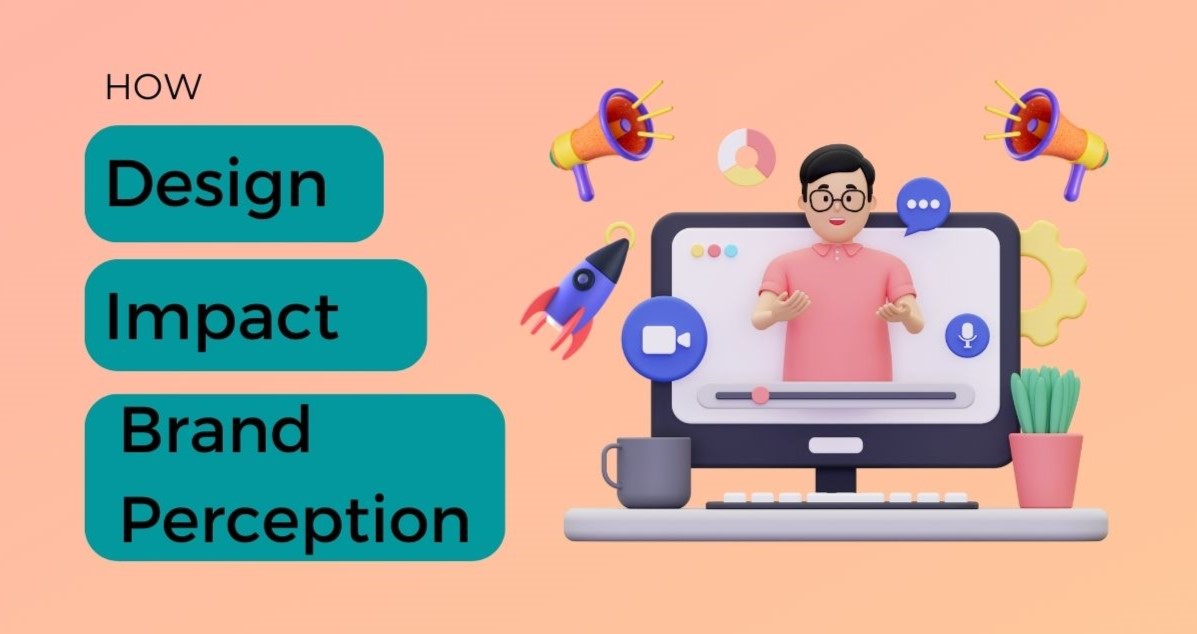Does Front-End Design Impact Brand Perception?
Sep 17, 2024 7977 seen
Introduction
Everyone is talking about design, its aspects, and its impact. People are exploring new design trends, including AI-driven designs. We all feel the power of good design when choosing between products or items. So, It’s clear that when design is good, few other things matter.
There’s no need to highlight the importance of good design in brand awareness. It is the first thing users notice, evaluate, and remember. However, despite all the value it brings to a brand, I still want to discuss the relationship between design and branding, as well as how design shapes perception.
1. Visual Identity and Consistency
One of the most obvious ways front-end design influences brand perception is through visual identity. A website’s design is an extension of a brand’s personality. Every design element should align with the brand's ethos, from the choice of colors and typography to the imagery used. Consistency across all digital touchpoints—a website, app, or social media—reinforces brand recognition and fosters trust.
For instance, a luxury fashion brand may opt for a minimalist design with high-quality visuals, muted colors, and elegant typography to convey sophistication and exclusivity. In contrast, a children’s toy brand might choose vibrant colors, playful fonts, and fun animations to reflect a youthful, energetic spirit. In both cases, the design elements are tailored to evoke specific emotions and associations that align with the brand’s identity.
Consistency in design also ensures that users can quickly identify a brand no matter where they encounter it online. A disjointed or inconsistent design experience can confuse users and dilute the brand’s message, making it harder for it to stand out in a crowded market.
2. User Experience and Usability
Beyond aesthetics, front-end design has a direct impact on user experience (UX). A well-designed website that’s easy to navigate creates a positive experience, making users more likely to stay longer, explore the content, and return in the future. A brand that prioritizes a smooth, intuitive UX is perceived as customer-focused and professional.
On the flip side, poor usability—such as slow loading times, confusing navigation, or unresponsive design—can frustrate users and damage a brand’s reputation. Research shows that users are quick to abandon websites that don’t meet their expectations for functionality and ease of use. A study by Google found that 53% of mobile users will leave a website if it takes longer than three seconds to load. This means that slow or clunky front-end design can leave users with a negative impression of the brand, potentially causing them to seek alternatives.
3. Emotional Connection and Branding Through Design
Front-end design can evoke emotions, and these emotions significantly influence how people perceive a brand. Emotional design focuses on creating meaningful experiences that resonate with users on a deeper level. Through color psychology, imagery, typography, and layout, brands can craft an emotional narrative that aligns with their values and goals.
Colors, for example, can evoke specific feelings. Warm colors like red, orange, and yellow often evoke excitement, energy, and optimism, whereas cooler tones like blue and green suggest calmness, trust, and security. Brands can harness these associations to evoke the right emotions in users. For example, a financial services brand might use blues and greens to evoke feelings of trust and stability, while a sports brand might use bold reds and blacks to convey energy and power.
Incorporating emotionally resonant visuals can also create a personal connection with users. For instance, high-quality images of real people interacting with a product can make the brand feel more relatable and human, reinforcing positive brand associations.
4. Trust and Transparency
Trust is a critical factor in shaping brand perception, and front-end design plays a key role in building it. Elements like transparency, simplicity, and clarity in design can enhance a brand’s credibility and foster trust with users.
For example, clear and concise messaging, easy-to-find contact information, and transparent privacy policies help users feel more comfortable engaging with a brand. Additionally, the inclusion of customer testimonials, reviews, and trust badges (such as security certifications) can further reinforce trust.
The way information is presented also matters. A cluttered or confusing layout can create a sense of chaos and make users question the professionalism of the brand. In contrast, a well-structured layout with clear calls to action and straightforward navigation reassures users that the brand values their time and is focused on providing a seamless experience.
5. Differentiation and Competitiveness
In a competitive marketplace, standing out is crucial. Front-end design offers an opportunity for brands to differentiate themselves and create a unique identity that sets them apart from competitors. A distinctive design, whether through innovative layouts, creative animations, or bold typography, can make a lasting impression on users and help a brand carve out its niche.
However, it’s important to strike a balance between creativity and usability. A highly creative design that sacrifices functionality can backfire, leading to user frustration. The best designs are those that blend innovation with a seamless user experience, allowing a brand to stand out while still meeting user expectations.
6. Brand Loyalty and Engagement
A well-designed website not only attracts users but also keeps them coming back. Engaging front-end design can boost brand loyalty by offering users an enjoyable and memorable experience. Features like personalized content, interactive elements (such as quizzes or dynamic scrolling), and smooth transitions create a sense of engagement and immersion.
Additionally, brands that regularly update their front-end design to reflect current trends or seasonal changes show that they are proactive and engaged with their audience. This ongoing commitment to improving the user experience fosters a sense of loyalty, as users feel that the brand is attentive to their needs.


